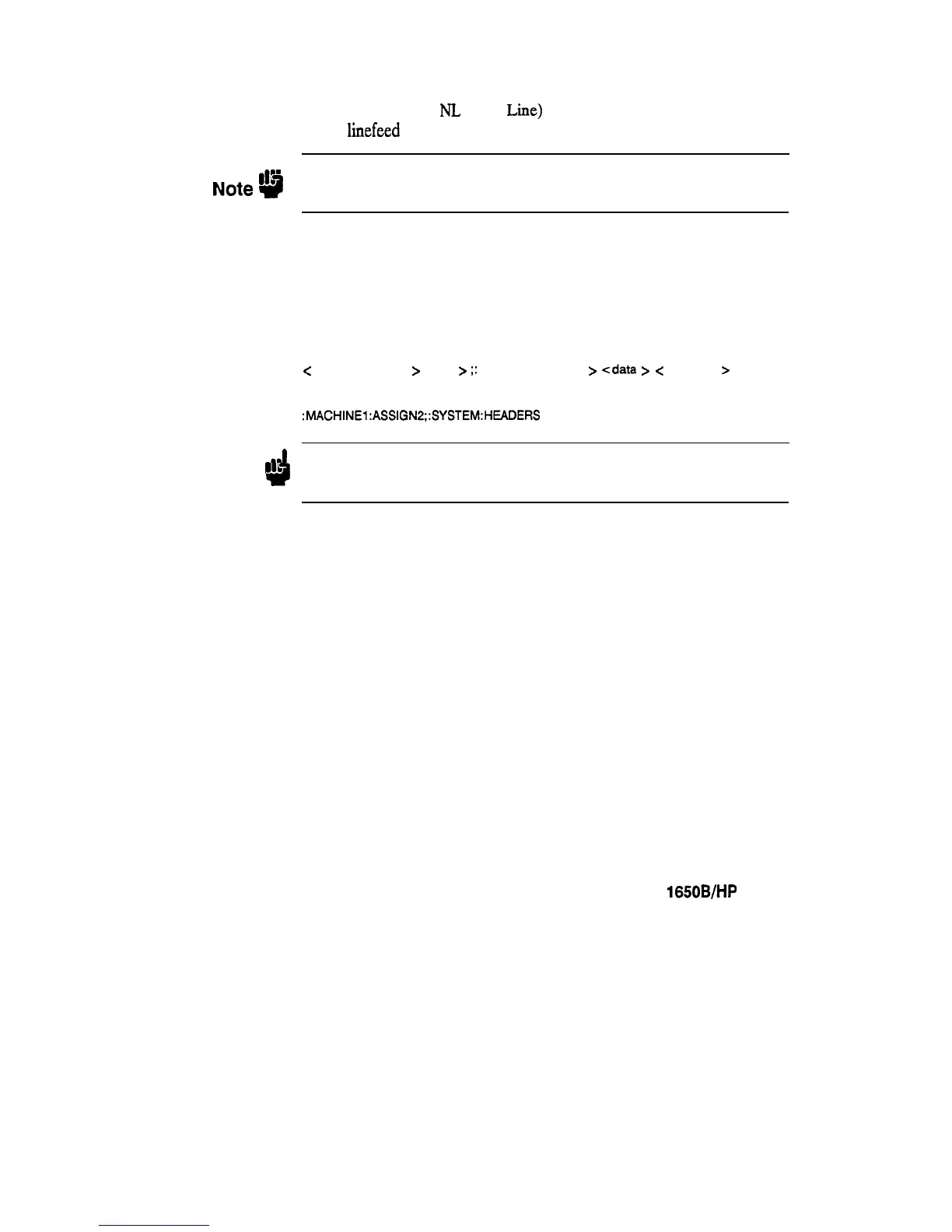Instruction Terminator
An instruction is executed after the instruction terminator is received.
The terminator is the NL (New
Line)
character. The NL character is an
ASCII
linefeed
character (decimal 10).
l
’
The NL (New Line) terminator has the same function as an EOS (End Of
Note
@
String) and EOT (End Of Text) terminator.
Selecting Multiple
You can send multiple program commands and program queries for
Subsystems
different subsystems on the same line by separating each command with a
semicolon. The colon following the semicolon enables you to enter a new
subsystem. For example:
<
instruction header
>
<data
>
;:
c instruction header
>
<data
>
-c
terminator
>
:MACHINEl:ASSIGN2;:SYSTEM:HEADERS
ON
,I[’
Note
d
Multiple commands may be any combination of simple, compound and
common commands.
Introduction to Programming an Instrument
l-10
HP 1650B/HP 16518
Programming Reference
